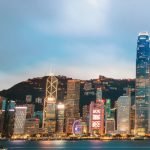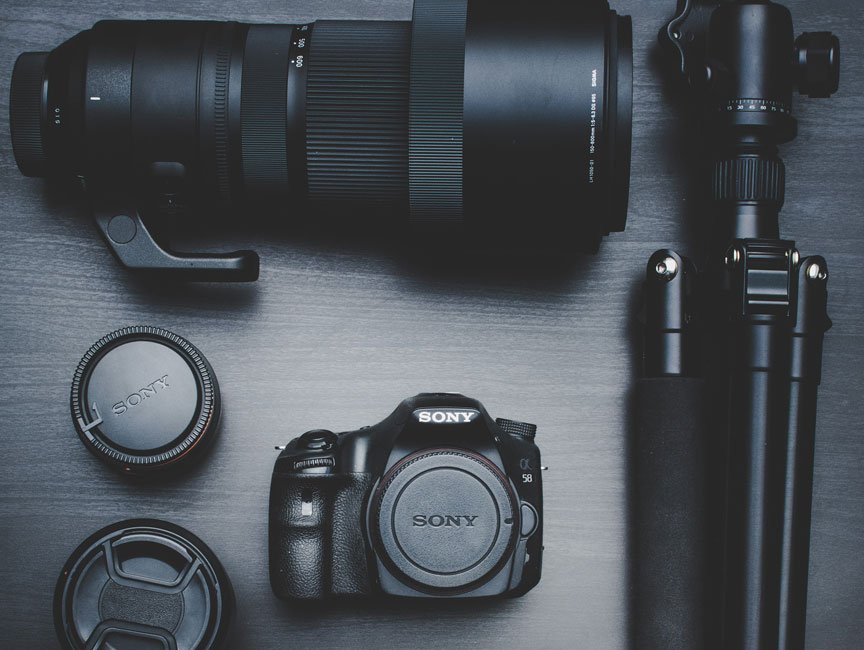
Best CAMERA for street Photography
- bey0ndM@gz!ne
- February 3, 2021
- Default, Tech
- 0 Comments
As a Hong Kong-based professional photographer, I do a lot of street photography in this beautiful and energetic city. From time to time, I receive questions such as “Can you recommend a camera that is great for street photography?” or “What is the best camera for street photography?”
My answer is almost always the same, as when I write in my website blog posts – it is difficult to define the best camera for street photography, but you can find one that best suits your needs, skill level and can produce the photos you like. This article takes a deep dive into how to pick a great camera for street photography, and my top picks!
Best Compact Cameras for Street Photography
- Canon PowerShot G5 X Mark II
- Ricoh GR III
Best Mirrorless Camera for Street Photography
- Sony Alpha a7C
THE BUILD
SENSOR
We see camera and smartphone manufacturers touting the megapixel sizes of their cameras. What does this even mean?
Megapixels are the area of an image being stored, expressed in pixels. The number of horizontal pixels multiplied by the number of vertical pixels gives you the total area. While it does give you some grounds for comparison, it does not give you the means to compare quality. A 16MB DSLR camera with an APS sensor will give you a better-quality image than a 16MB cell phone with a 1/2.3” sensor (assuming all other factors are the same).
SENSOR SIZE
The camera sensor is the device that takes the incoming light and translates it to a digital image. Noise and distortion of light change depending on the size and quality of the sensor size. Furthermore, smaller sensors do not leave much leeway to crop images.
The larger the sensor, the more light it can translate. This means the possibility to improve sharpness, record both shadows and highlights, and tones are greater. I say possibility because it still depends on the photographer to use the camera properly and take the best photo.
The sensor is the most expensive part of a camera. Additionally, the size of the sensor will impact the size of the camera, power requirements, and the size of the lens used. These will influence the size and cost of the camera as well.
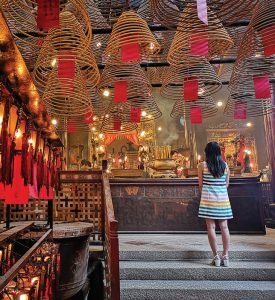 SENSOR SIZES OF DIFFERENT TYPES OF CAMERAS
SENSOR SIZES OF DIFFERENT TYPES OF CAMERAS
The old 35mm film size is the standard that digital sensor sizes are measured against. Lens sizes are also generally given as the 35mm equivalent. Let’s look at a few common sensor sizes:
Full Frame: A full-frame camera has a sensor the same size as a 35mm film camera. These are cameras for the professional digital photographer and are often a considerable investment.
APS-C: Advanced Photo System type-C (APS-C) sensors are used in many DSLR cameras and some point-and-shoot cameras. When compared to the full frames they have a crop factor of 1.5, giving outstanding results. However, they allow 2.4 times less light to be recorded when judged against the full-frame sensor. On the other hand, compared against the 1/2.3” sensor, they allow 15 times the amount of light. You will find some professional-level cameras using APS-C as well.
1/2.3” sensor: these sensors are the most common size in small cameras and some higher quality cell phone cameras. The image size is 1/35th of the 35mm standard. Noise can become a problem if you make large prints. If you are looking for web and social media quality, this size sensor should meet your requirements.
SIZE AND WEIGHT OF THE CAMERA
Most street photographers will tell you “light and small” is the way to go. A large fancy camera and extra lenses will likely draw attention to you. As will a large camera bag. Most street photographers would rather blend in and not call attention to themselves. Most APS-C type cameras will be smaller and more suited for street photography.
You may spend a better part of a day walking around taking photos, so it will not take long before you start to feel the weight of the camera and anything else you carry! A camera that will fit in a jacket pocket is the preferred size for many professional street photographers.
LENS
Street photographers generally take a different view on lenses than photographers in other genres. You will often see media or sports photographers loaded down with a camera and several different types of lenses from long 400mm zooms to 70-200mm f2.8. When it comes to candid shots, the preference is for a fast focus fixed length lens, called a prime lens. These lenses generally allow more light to pass compared to a zoom lens. Working with the same focal length allows you to develop your “eye” and the general consensus among street photographers is a 35mm or 50mm prime lens.
Even before you look in your viewfinder or screen, you will know what the camera is seeing. As you become familiar with your camera and lens combination, you will quickly find the best composition for your image. Do take into consideration which lens you are planning to use before buying your camera.
AUTO-FOCUS
There is nothing more frustrating than having framed the perfect candid shot, but your camera has not finished focusing. Today’s cameras are much better at auto-focus than cameras of even 5 years ago. Still, difficult conditions can confuse the camera. Low light and low contrast conditions may lead to longer than expected focusing time.
Face recognition software has even come to many cameras, even low-cost ones. Cameras with this feature will prioritise faces as the focus point. You will, however, need the option to turn this feature off.
SOUND OF SHUTTER
The sound of the shutter is highly recognized. If you are trying to keep a low profile while taking your street photographs it may be something you may wish to control. Today’s cameras are very quiet, in some cases silent. A quiet shutter, especially in religious buildings, is a must.
I would suggest you pick a camera with a more quiet or silent shutter for taking street photography since you never know when you will need this option.
WHAT TO CONSIDER?
Several factors need to be considered when deciding which camera is the best for street photography. Some factors are given more weight in terms of importance, depending on the individual.
Before looking into which cameras, ask yourself these questions:
What will you do with your photographs?
I know, I know… This seems like a trivial question. However, how you choose to use your photographs determines the quality of image you require.
If you plan on sharing your street photographs online or via social media, then there are more options. If you may want to display your photography or even print, then this narrows down your choices. Most cameras will give you acceptable prints up to 11×14 inches, but beyond this, many cameras will fail you.
How will you shoot?
Do you want to just blend in? Give the appearance of a casual tourist? Taking fast candid photos, shooting from the hip? Or approach people and ask if you can photograph them? These questions could lead you to different size cameras. What can you afford to lose? Some cameras might make you vulnerable to theft, due to their value. Another point, is the potential for accidental damage. What would happen if you were jostled in a crowd and your camera dropped to the ground? Some cameras might be destroyed while others might just get some scuff marks. How likely are these scenarios for you?
Sometimes when we photograph in the street, we like to create a sense of motion in our frame. To learn more about how to create this effect in images, check out more of my tips on my website: www.aligstudios.com.
Our Recommendation
The first thing you learn when looking to buy a boat is there is no perfect boat. To get some features, you may have to forego another feature. Buying a camera is similar. You may have to give up one thing to get another.
Defining the best camera for any function is difficult. For ease, let’s bracket some cameras into different categories.
If you are looking to make your entry into street photography as a serious amateur or work your way into a professional career, a compact camera may be your best choice. These cameras are an investment, but definitely will not require you to mortgage your home! They are better than low-level point and shoot cameras and can help you provide high-quality images.
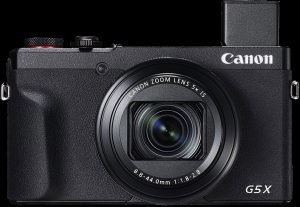 Canon PowerShot G5 X Mark II
Canon PowerShot G5 X Mark II
The Canon PowerShot G5 X Mark II is a great camera. This new and improved allin-one camera is great for street photography and travelling.
If you are looking for a small size camera that comes with a great quality zoom lens, aperture control, high image quality, and would work in dimmer light, you will probably love the Canon PowerShot G5 X Mark II.
Size
One of the most impressive characteristics is its small build. The Canon PowerShot G5 X Mark II is 4.37”(110.9mm) x 2.4”(60.9mm) x 1.81”(46.0mm) in size with a pop-up viewfinder. It weighs just 12 oz. (340g) including the battery and memory card. This allows the camera to easily fit into a pocket.
Sensor Quality
Do not be fooled into thinking this is a run-of-the-mill compact camera. The camera has a 1.0-inch stacked CMOS giving it a whopping 20.1 Megapixel image. Compact cameras generally have a 1/2.3” sensor. While not up to the level of APS-C, it is a huge improvement over the old 1/2.3” sensor. The PowerShot can save images to four different JPEG sizes. The 1.0-inch stacked CMOS allows it to also save in RAW format.
Image Formats
When you save an image in a camera in JPEG format, the processor in the camera makes some adjustments. These adjustments cause some of the original information to be lost. A high contrast JPEG might lose details in the shadows or highlights.
RAW format records all the light information that the sensor receives. Sort of like what film does. However, it is not usable directly from the camera, it needs to be processed first. When it is processed, all the original information is there for you to use. Canon’s PowerShot G5 X Mark II allows you to save both RAW data and JPEG images.
Autofocus
The autofocus is fast and you can “track” the subject so that a moving subject will stay in focus. The autofocus tracking allows shooting at up to 20.0 fps. The RAW burst mode (no JPEG) allows shooting at up to 30.0 fps. One amazing feature is being able to change the point of focus by touching the part of the image on the touchscreen that you want the AF point to be.
Other Features
The PowerShot comes with a 5x optical zoom lens. The lens covers a range from 24mm wide-angle with an aperture of f/1.8 to 120mm telephoto with an aperture of f/2.8. This lens performs well in low light situations. The camera has an advanced Optical Image Stabilisation system coupled with digital zoom. Using both the optical and digital zooms allow a 17x zoom.
The camera has a built-in flash and will record 4k video as well. It comes with a battery, battery charger, and wrist strap.
What is Not That Nice?
I love the Canon PowerShot G5 X Mark II, but if there is one thing, I don’t really like is the pop-up viewfinder. It’s just… not my thing.
RICOH GR III
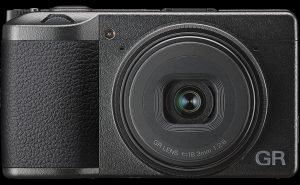 The Ricoh GR III is a pocket-size camera, and an outstanding choice for street photographers. Professionals seem to give this camera mixed reviews. Like Opera, you will either love this camera or hate it the first time you use it.
The Ricoh GR III is a pocket-size camera, and an outstanding choice for street photographers. Professionals seem to give this camera mixed reviews. Like Opera, you will either love this camera or hate it the first time you use it.
I am a fan of this camera: it is small and comes with a big sensor and a high-quality lens, which produces super sharp and high quality images. I also love the shake reduction tech used to keep the camera stable.
Size
This camera is slightly smaller and weighs less than the PowerShot. The GR III measures 4.3” (109.4mm)×2.43” (61.9)×1.31”(33.2mm) and weighs just 9 oz (257g), including the battery and SD memory card. This camera can easily be operated with one hand.
Lens
The lens is a fixed 18.3mm (28mm in 35mm equivalent focal length) instead of the PowerShot’s zoom lens. Having a fixed-length lens vs a zoom lens is a personal preference, however, most street photographers prefer the fixed wide-angle lens. The aperture of both camera’s lenses is F2.8.
Sensor Quality and Image Format The Ricoh GR III comes with a great quality sensor, having a 24 MP APS-C sensor. The high-quality sensor combined with the camera’s shake reduction system gives the photographer excellent image quality. It will save both RAW and JPEG formats as well.
What is Not That Nice?
I am pretty happy with the Ricoh GR III, but these are the things that could be improved:
I am pretty happy with the The Ricoh GR III. It comes with a hand strap, rechargeable battery DB-110, USB Cable, USB Power Adapter and a power plug. However, these are the things that could be improved:
- It does not come with a flash.
- Battery life is pretty limited, so you may need to carry a spare one.
- Does not handle noise well in low light situations.

